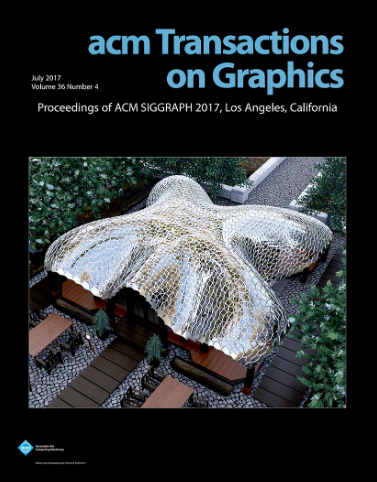Predicting Fabric Appearance Through Thread Scattering and Inversion
IF 9.5
1区 计算机科学
Q1 COMPUTER SCIENCE, SOFTWARE ENGINEERING
引用次数: 0
Abstract
The fashion industry has a real need to preview fabric designs using the actual threads they intend to use, ensuring that the designs they envisage can be physically realized. Unfortunately, today's fabric rendering relies on either hand-tuned parameters or parameters acquired from already fabricated cloth. Furthermore, existing curve-based scattering models are not suitable for this problem: they are either not naturally differentiable due to discrete fiber count parameters, or require a more detailed geometry representation, introducing extra complexity. In this work, we bridge this gap by presenting a novel pipeline that captures and digitizes physical threads and predicts the appearance of the fabric based on the weaving pattern. We develop a practical thread scattering model based on simulations of multiple fiber scattering within a thread. Using a cost-efficient multi-view setup, we capture threads of diverse colors and materials. We apply differentiable rendering to digitize threads, demonstrating that our model significantly improves the reconstruction accuracy compared to existing models, matching both reflection and transmission. We leverage a two-scale rendering technique to efficiently render woven cloth. We validate that our digital threads, combined with simulated woven yarn geometry, can accurately predict the fabric appearance by comparing to real samples. We show how our work can aid designs using diverse thread profiles, woven patterns, and textured design patterns.通过纱线散射和反演预测织物外观
时尚行业确实需要使用他们打算使用的实际线来预览面料设计,以确保他们设想的设计可以在物理上实现。不幸的是,今天的织物渲染依赖于手工调整的参数或从已经制造的布料中获得的参数。此外,现有的基于曲线的散射模型不适合这个问题:它们要么由于光纤计数参数离散而不能自然微导,要么需要更详细的几何表示,引入额外的复杂性。在这项工作中,我们通过提出一种新颖的管道来弥合这一差距,该管道可以捕获和数字化物理线程,并根据编织模式预测织物的外观。在模拟一根线内多根光纤散射的基础上,建立了一个实用的线散射模型。使用经济高效的多视图设置,我们捕捉不同颜色和材料的线程。我们将可微渲染应用于数字化线程,表明我们的模型与现有模型相比显着提高了重建精度,同时匹配了反射和透射。我们利用双尺度渲染技术来有效地渲染编织布。通过与实际样品的对比,验证了我们的数字线,结合模拟的编织纱线几何形状,可以准确地预测织物的外观。我们展示了我们的工作如何使用不同的螺纹轮廓,编织图案和纹理设计图案来帮助设计。
本文章由计算机程序翻译,如有差异,请以英文原文为准。
求助全文
约1分钟内获得全文
求助全文
来源期刊

ACM Transactions on Graphics
工程技术-计算机:软件工程
CiteScore
14.30
自引率
25.80%
发文量
193
审稿时长
12 months
期刊介绍:
ACM Transactions on Graphics (TOG) is a peer-reviewed scientific journal that aims to disseminate the latest findings of note in the field of computer graphics. It has been published since 1982 by the Association for Computing Machinery. Starting in 2003, all papers accepted for presentation at the annual SIGGRAPH conference are printed in a special summer issue of the journal.
 求助内容:
求助内容: 应助结果提醒方式:
应助结果提醒方式:


